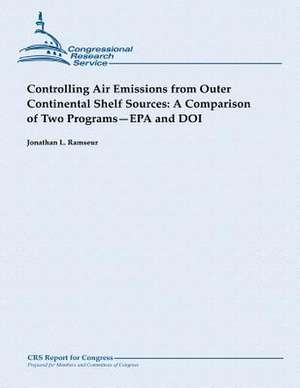Controlling Air Emissions from Outer Continental Shelf Sources
Autor Jonathan L. Ramseuren Limba Engleză Paperback
Preț: 93.84 lei
Nou
Puncte Express: 141
Preț estimativ în valută:
17.96€ • 19.52$ • 15.10£
17.96€ • 19.52$ • 15.10£
Carte disponibilă
Livrare economică 31 martie-14 aprilie
Preluare comenzi: 021 569.72.76
Specificații
ISBN-13: 9781482762242
ISBN-10: 1482762242
Pagini: 36
Dimensiuni: 216 x 279 x 2 mm
Greutate: 0.11 kg
Editura: CREATESPACE
ISBN-10: 1482762242
Pagini: 36
Dimensiuni: 216 x 279 x 2 mm
Greutate: 0.11 kg
Editura: CREATESPACE
